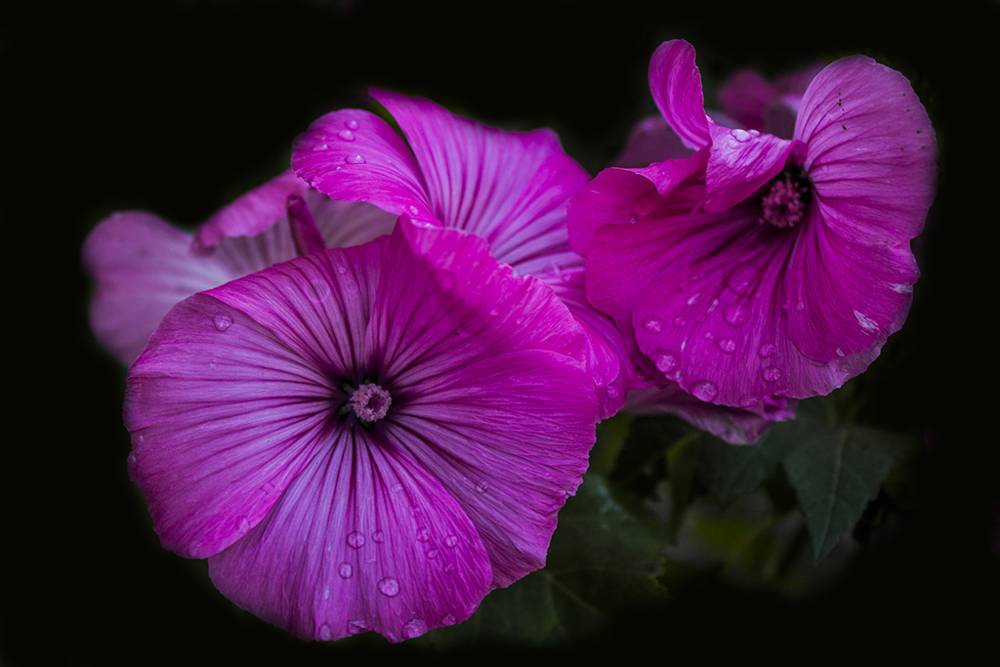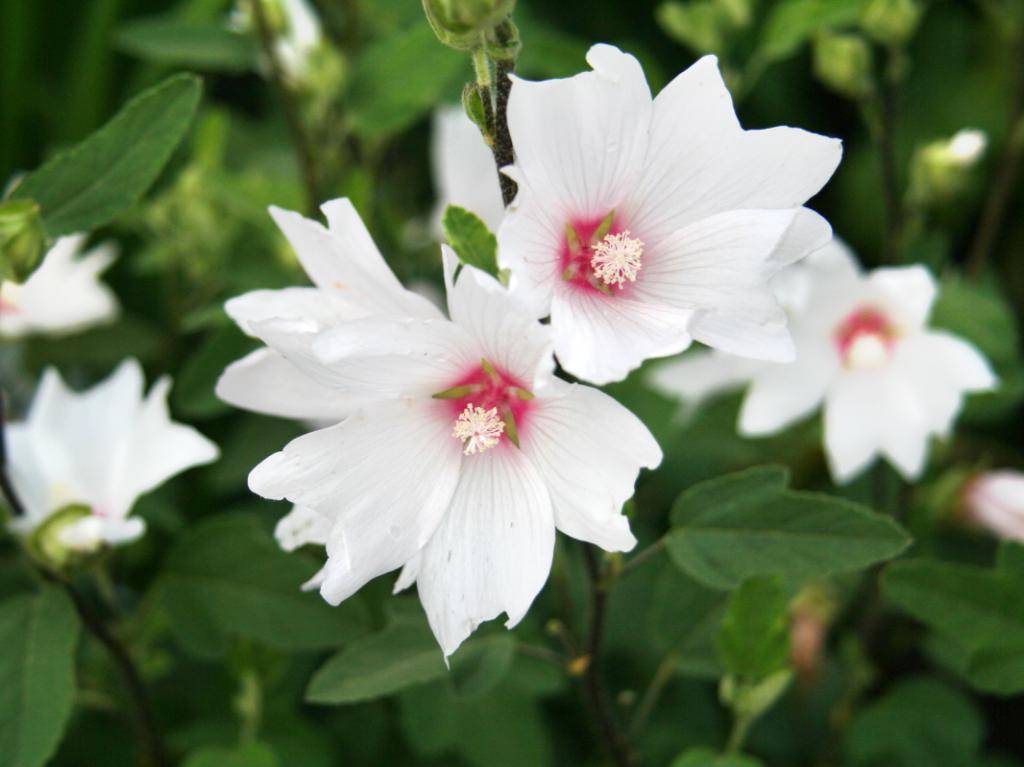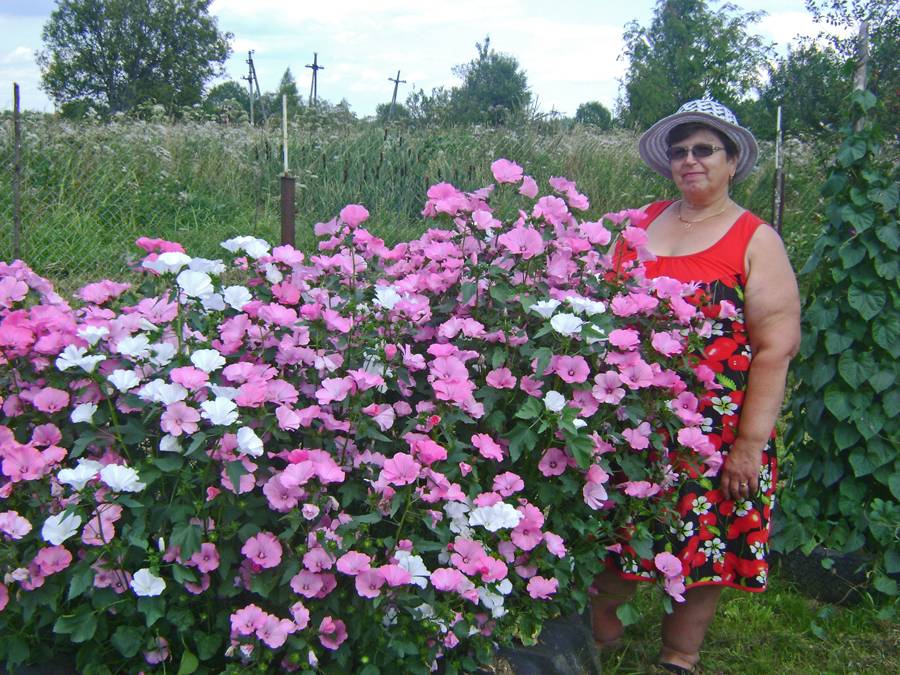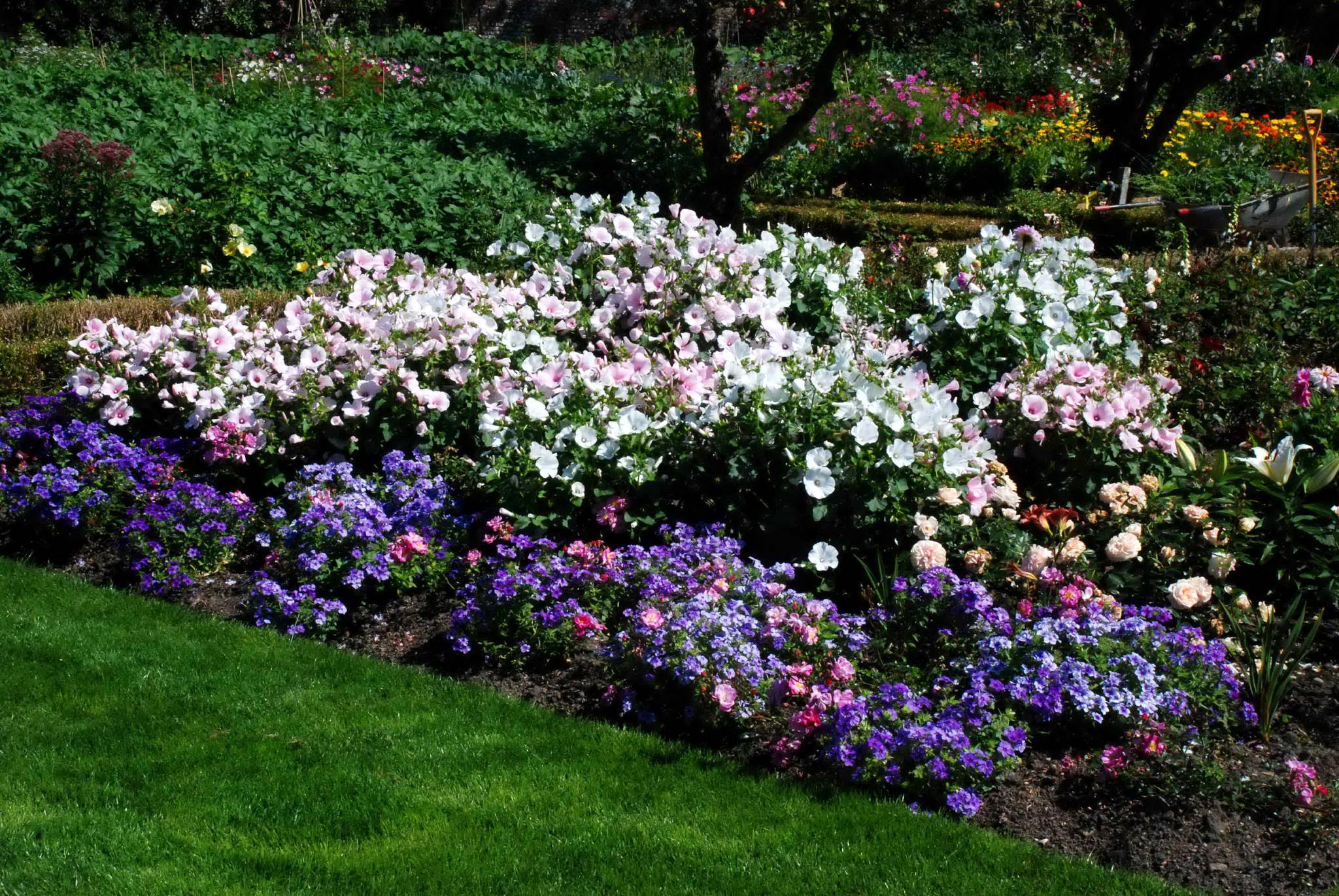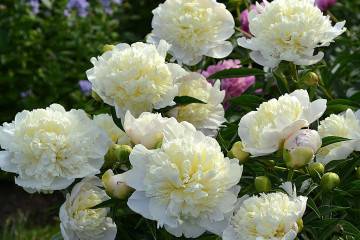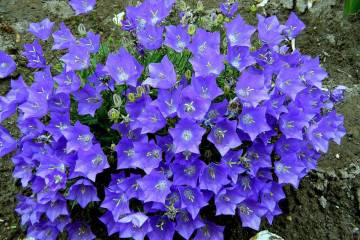Lavatera perennial - white and pink flowers in the garden
Content:
Each florist, breaking a flower garden, tries to select only the most beautiful, unpretentious and long-flowering plants. The huge variety sometimes complicates the choice, but despite this, there are varieties that gardeners give special preference to. These varieties include perennial lavatera, or, as it is also called, wild rose.
Perennial Lavater features
Lavatera flower is a plant with a wide range of colors and a wide variety of varieties. The culture is a shrub that is strewn with vibrant lush flowers. In the wild, the plant can be found in Australia, North America and the European continent.
Lavatera is both an annual and a perennial plant. Belongs to the Malvov family. On personal plots, it can be found very often. Florists prefer him not only because of its attractive appearance, but also unpretentiousness in the growing process.
For the first time, culture became known in the 16th century. The native land of the plant is considered to be the north of Africa and the south of Europe. There are several versions about the appearance of the name. Some believe that the flower received it for its even and pure color, while others argue that it was named after the doctors and talented naturalists of the Lavater brothers.
Plant characteristic
For any garden plot, a wild rose is a delicate and sophisticated decoration. Among other flowers, the culture stands out for its abundant and long flowering.
The plant grows in height in the range from 50 to 200 cm.The flower is distinguished by a well-developed root system, which quickly forms and in the first year goes into the ground by 1-1.5 m.
Flowers can be of completely different colors. They are large in size, they can be about 18 cm in diameter.
They are located singly or in several pieces, depending on the variety. The plant begins to bloom in the first half of summer and pleases with an attractive and lush flowering until the first frost.
The plant is suitable for novice florists, as it does not require certain knowledge and specific skills in the care process.
Classification of Lavatera varieties
Thanks to the efforts of breeders, many varieties have been bred over the years, and until now, work on breeding new species does not stop. But, despite the huge variety, only a few are popular among flower growers.
Three-month lavatera (Lavatera trimestris)
A flower that cannot go unnoticed in a flower bed. It is distinguished by its impressive size. It grows more than one meter in height. Beautiful large single flowers with diameters of about 10 cm are formed on the flower.Their color can be carmine, pink or white. The plant of this variety is very fond of well-lit places, in which case the flowering becomes abundant.
Lavatera thuringiaca, or Dog Rose (Lavatera thuringiaca)
Perennial tall plant, the height of which is usually about two meters. Flowers are large, single, pink in color. The leaves are large, silvery-green, heart-shaped or lobed.
Lavatera arborea (Lavatera arborea)
Variety with a straight, powerful stem. The plant is two years old, it grows up to 2 m in height. The leaves are large and fleshy, delicate emerald color. The flowers look like hibiscus flower stalks of red-purple color with dark veins. A feature of the variety is that after wilting, fruits are formed on the plant, the shape of which resembles a head of cheese.
Seaside lavatera (Lavatera maritime, or Lavatera bicolor)
This type of plant is grown only in areas with predominantly mild winters. It grows up to 150 cm. Flowers are two-colored. Both shades are lilac.
Cretan Lavatera (Lavatera cretica)
The plant grows to a height of 180 cm. The leafy plates are fleecy, rounded in diameter up to 20 cm. Flowers are collected in groups, growing from the axils of the leaves. They are purple or purple.
Lavatera mauritanica
This type of plant can only be grown in warm regions of Russia. The flower grows to a height of 80 cm. The leaf plates are rounded with a pointed tip. Purple flowers reach 3 cm in diameter.
Lavater varieties popular with gardeners
The garden rose Lavatera is a frequent visitor to personal plots. Many gardeners strive to grow it, choosing a variety depending on regional characteristics and individual preferences.
Lilac Lady
Medium-sized plant with lilac flowers with dark lilac streaks. In height, the bush can reach no more than 120 cm. The leaves, according to the description of the variety, are large, silvery-emerald in color.
I catcher
Perennial with rich pink flowers. The flower is distinguished by its delicate and attractive appearance.
Burgundy Vine
Lavatera with wine-purple flowers, which are given a special volume by contrasting veins. The flower looks very impressive.
Barnsley Baby
The plant of this variety grows no more than 1.5 m in height. It is distinguished by branched stems. The flowers are light pink or white with pronounced pink eyes. In the middle of flowering, they acquire a darker shade. The bush is very compact. Looks perfect on flower beds surrounded by cereals, sage and catnip.
Bregon Springs
A tall variety with long, highly branched shoots, the height of which is about 150 cm. The leaves are large, silvery-emerald in color. The flowers are pink-lilac with crimson veins. The flower is distinguished by abundant and long flowering.
Silver Cap
A tall bush with branched shoots reaches a height of 70 cm. Flowers are large purple with dark veins. Bloom lasts from June to September. Refers to cold-resistant varieties.
Mont Blanc
Low-growing annual flower with highly branched stems and large snow-white flowers. The leaves are large and emerald. Used to create curbs and grow in flower pots.
Ruby Queen
A beautiful, profusely flowering variety of small size.It blooms with single pink-carmine flowers.
Beautiful girl
Spectacular flower with large, beautiful and bright pink flowers. The plant reaches a height of 60 cm. It blooms from July to the end of September.
Goddess of the sun
A tall variety, representatives of which grow up to 110 cm in height. Leaves are rich in dark green color. The plant belongs to drought-resistant and cold-resistant plants. The color is multi-colored.
Novella
A short, recently bred variety. Representatives of this species can be grown both outdoors and in pots. Flowers are large pink.
White Sherub
The flower is low. It is grown both outdoors and in pots. The flowers of this lavatera are white, collected in numerous inflorescences.
Seed planting by seedling method
Using the seedling method, you can get strong and tall bushes that will bloom much earlier.
Time to board
Many budding flower growers are wondering when deciding to grow lavater from seeds when to plant a plant. Sowing seeds for seedlings is necessary in mid-March.
Choice of capacity
Lavater seedlings are recommended to be planted in a spacious container.
Soil and seed preparation
For growing seedlings, experienced florists recommend using a mixture of turf and humus. The seeds do not require preliminary preparation. As soon as the soil with the bowl is ready, the seed must be spread out on the soil surface and sprinkled with soil on top.
Seedling care
The container with crops is placed in a bright and warm place. If all the necessary conditions are provided, the first shoots will appear in a few weeks. To quickly grow seedlings, you need to provide it with 12-hour daylight hours.
Periodically, it is required to remove the film, remove condensate and water the seedlings. As soon as the first shoots appear, the film must be removed.
Features of planting in a seedless way in the open field
Seeds can be planted directly in open ground only if a warm climate prevails in the region. They start work when the frost has passed.
The flower has no special preferences for its location. But it is better to plant a flower in a lighted area, in which case you can achieve abundant flowering. It is very important that the soil is fertile.
Features of care in the garden
Planting and caring for a lavater is straightforward. In order for the flower to fully grow and develop, it is enough to remove weeds in a timely manner and provide watering.
Lavater flowers require minimal maintenance. Moreover, all activities should be carried out not often, but regularly. The plant is very fond of well-lit areas and is stressed by low temperatures and drought.
Watering
Lavatera needs regular watering. This is especially true for hot days. In the summer, it is enough to water the plant once a week. When watering, you need to make sure that no water gets on the buds.
Mulching and loosening
Mulching the lavatera is the recommended procedure, as it prevents the soil from drying out and reduces the negative impact on the flower, and also helps to avoid frequent weeding.
After watering, experienced florists recommend loosening the soil.
Top dressing
Despite the fact that wild roses can grow in poor soils, experts recommend feeding the plant. In this case, the flower will look well-groomed and beautiful.
As a rule, experienced flower growers advise to feed the lavater only once a month. For this, organic and mineral fertilizers are suitable.
When and how it blooms
When the lavatera blooms, it is impossible to take your eyes off it. This is a very beautiful and showy plant.
Types and forms of flowers
The flowers are rather big, up to 10 cm in diameter. The buds can be either single or paired. Depending on the variety, they create cluster or spikelet inflorescences.
Flowering period
The wild rose blooms from early summer to mid-autumn.
Changes in care during flowering
During the flowering period, caring for a flower is no different. It needs to be watered regularly and fed once a month.
Post-flowering care
After the wild rose has faded, a seed pod will form in place of the flower, which will need to be left to ripen. As soon as it turns brown, this will be a kind of signal that the seeds are ripe.
Seed collection
Collecting seeds at home is very simple. It is necessary to carefully separate the dried box from the bush, open it and pour the seed material onto the paper to dry. Then place it in a dry place.
Wintering of perennial and annual varieties
Perennial varieties of Lavatera for the winter need to be bent to the ground and covered. For this, you can use spruce branches or foliage. It is recommended to apply phosphorus-potassium fertilizer before shelter.
Annual varieties are dug at the end of the season, and the soil is carefully dug in their place.
Possible growing problems
Many flower growers prefer to grow lavater not only because of its decorative features, but also because of its strong immunity.
Pests
In rare cases, the plant can be affected by garden aphids. In this case, the leaves of the flower will begin to curl. You can cope with the problem with the help of a tool such as an aktara.
Diseases
As far as diseases are concerned, the wild rose also has good resistance to them. Sometimes the grower may experience red, brown or yellow spots on the plant. This indicates that the flower is affected by rust. In such a situation, you need to immediately remove the affected areas and treat it with Bordeaux liquid or topaz.
Lavatera is a very beautiful plant that blends perfectly with many flowers. It can be used both for single planting and for creating compositions. The flower not only has excellent decorative properties, but can also be used as a medicinal plant. It is unpretentious in care, so even a novice florist can cope with it.

